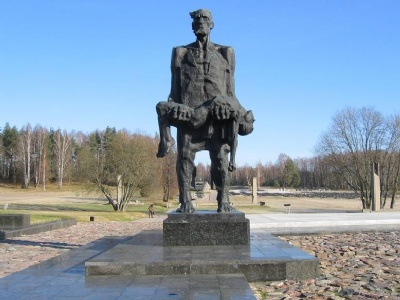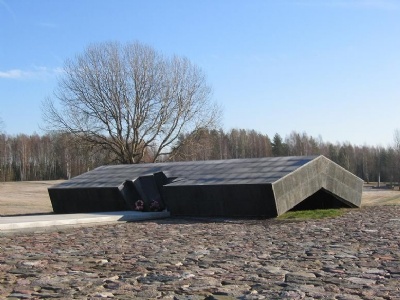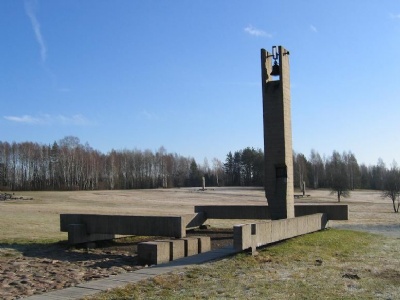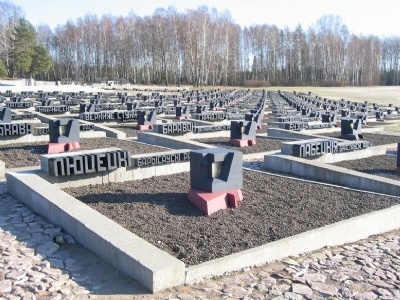Khatyn
Sixty kilometres north of Minsk lies the small village Khatyn who met the same fate as Lidice in Czech Republic and Oradour in France. Khatyn and its inhabitants were annihilated in retaliation for an attack on a German motor convoy 22 March, 1943, killing four German police officers from the 118th police battalion. When the battalion headquarters found out about the attack, its commander, Grigory Vassiura, ordered Khatyn to be wiped out. The choice of Khatyn was a combination of coincidence and unconfirmed suspicions of partisan activity. Vassiura also called in reinforcement from the infamous SS battalion, Dirlewanger, under the command of political scientist SS-Obersturmführer Dr. Oskar Dirlewanger.
The battalion consisted mostly of criminals whose main task in Belarus was to annihilate partisans (and civilians) and destroy villages in retaliation for germans being killed in the area. When forces from the 118th police battalion and Dirlewanger arrived in Khatyn, they rounded-up the villagers and locked them in a barn which was then set on fire. When the inhabitants tried to escape from the barn, they were shot down by the Germans who stood outside and oversaw the whole thing. The village was subsequently destroyed and a total of 149 people were murdered, including 75 children, the youngest only seven weeks old. Two girls managed to escape to a nearby village only to be murdered at a later date at a similar retaliation operation. The only people who survived the massacre were two children and the 47-year-old Josef Kaminsky.
Current status: Demolished with museum (2007).
Location: 54° 20' 4" N, 27° 56' 37" E
Get there: Car.
Follow up in books: Munoz, Antonio J. & Romanko, Oleg V.: Hitler’s White Russians: Collaboration, Extermination and Anti-Partisan Warfare in Byelorussia, 1941-1944 (2003).




Khatyn was one of 628 villages destroyed by the Nazis in Belarus between 1941 and 1944, of these, 186 were never rebuilt. 442 Villages were rebuilt and populated after the war, counting all villages destroyed or partially destroyed by the Nazis the number is 5295 villages. Historians in Belarus estimate that one out of three Belarusians lost their lives during the war. The Khatyn massacre was perhaps not the biggest or worst act of revenge, but the village has become a symbol and a worthy memorial to all the suffering that befell Belarus. But already during the existence of the Soviet Union, Khatyn was highlighted and there were nasty western tongues who claimed that the Soviet Union deliberately chose Khatyn to confuse it with Katyn. Katyn is located outside Smolensk (now Russia) and there the Soviet Security Service (NKVD) murdered thousands of Polish officers in 1940. Despite the similarity of the names, Khatyn is pronounced with a silent K while Katyn is pronounced as it is spelled.